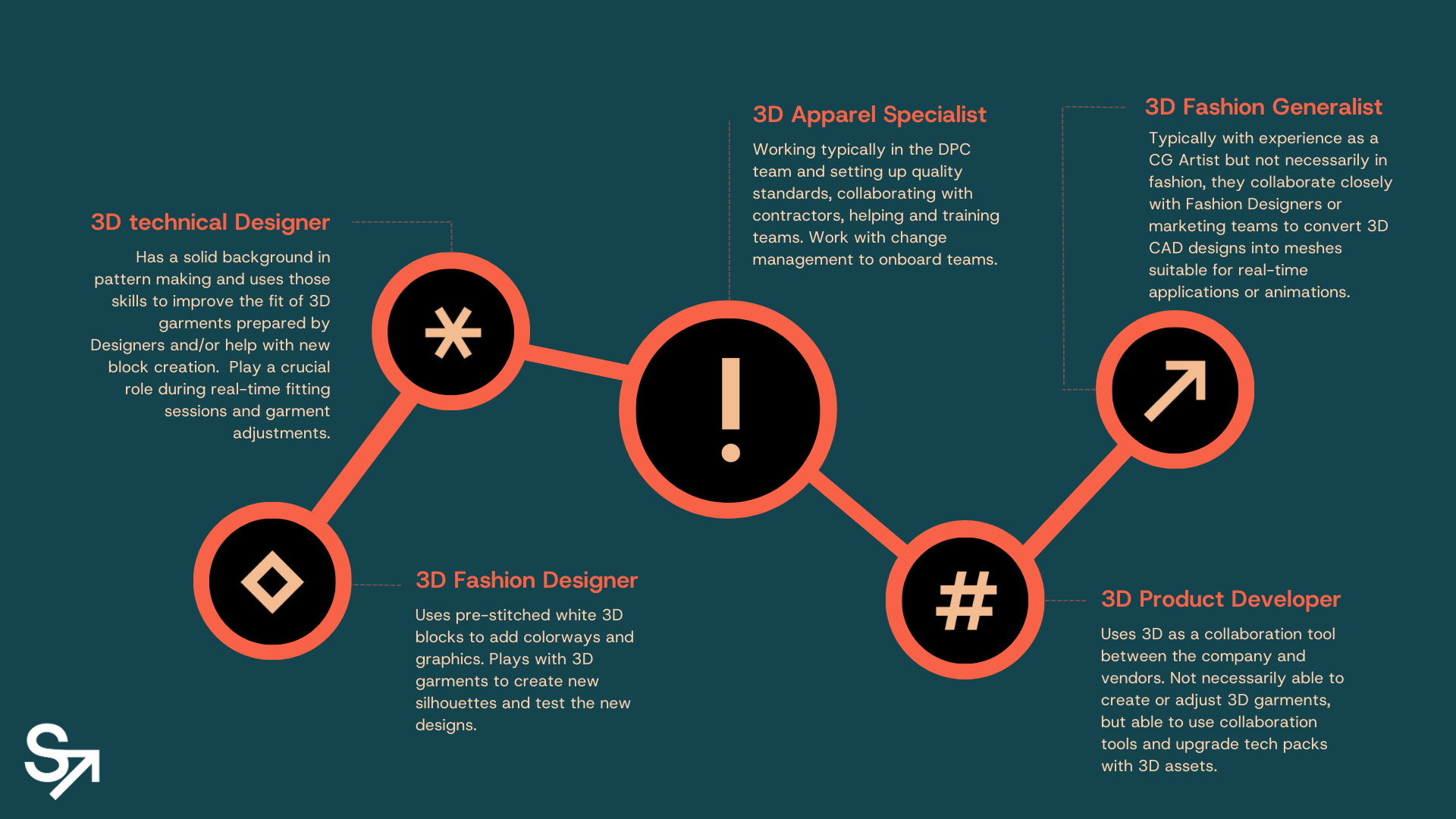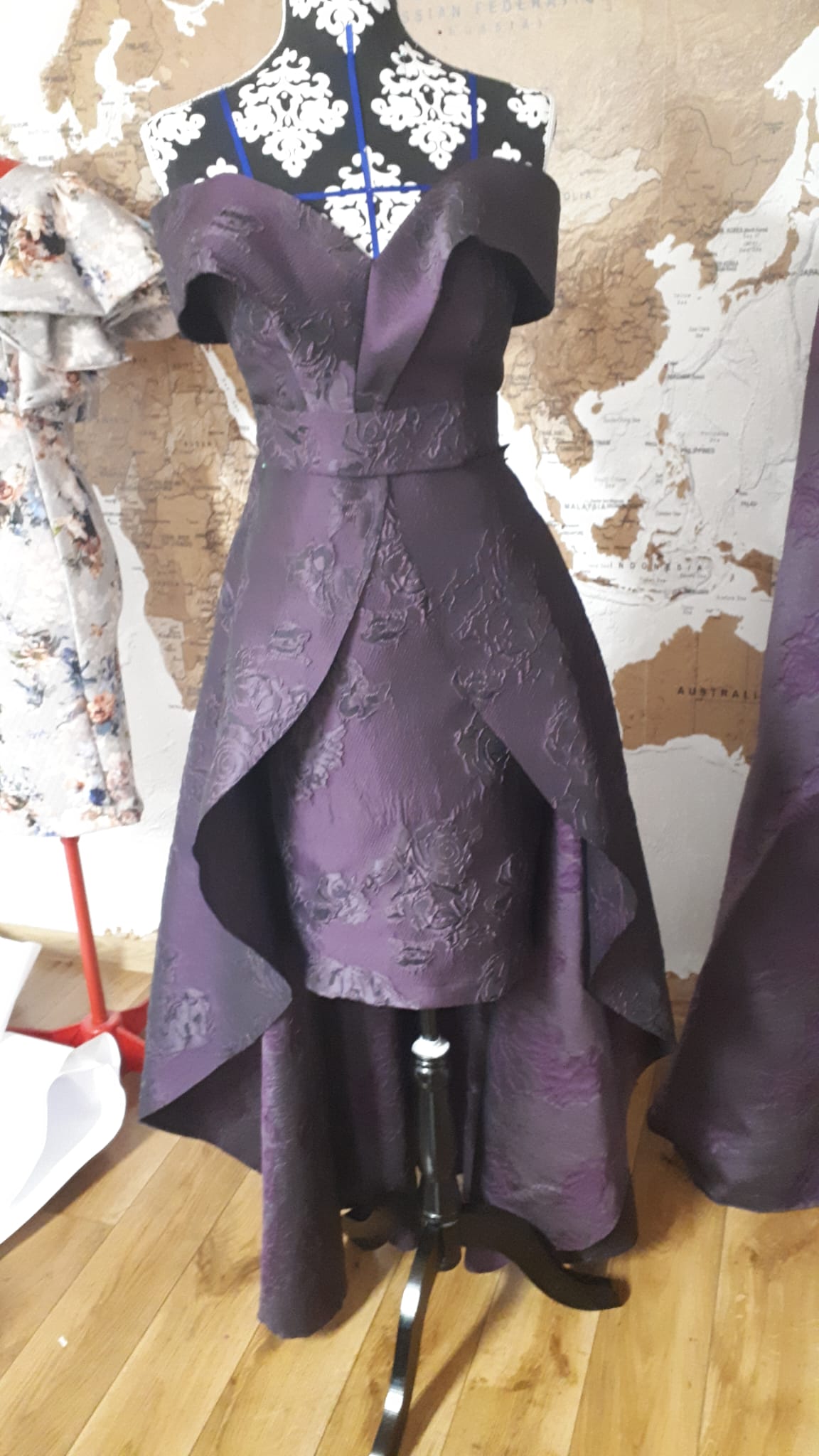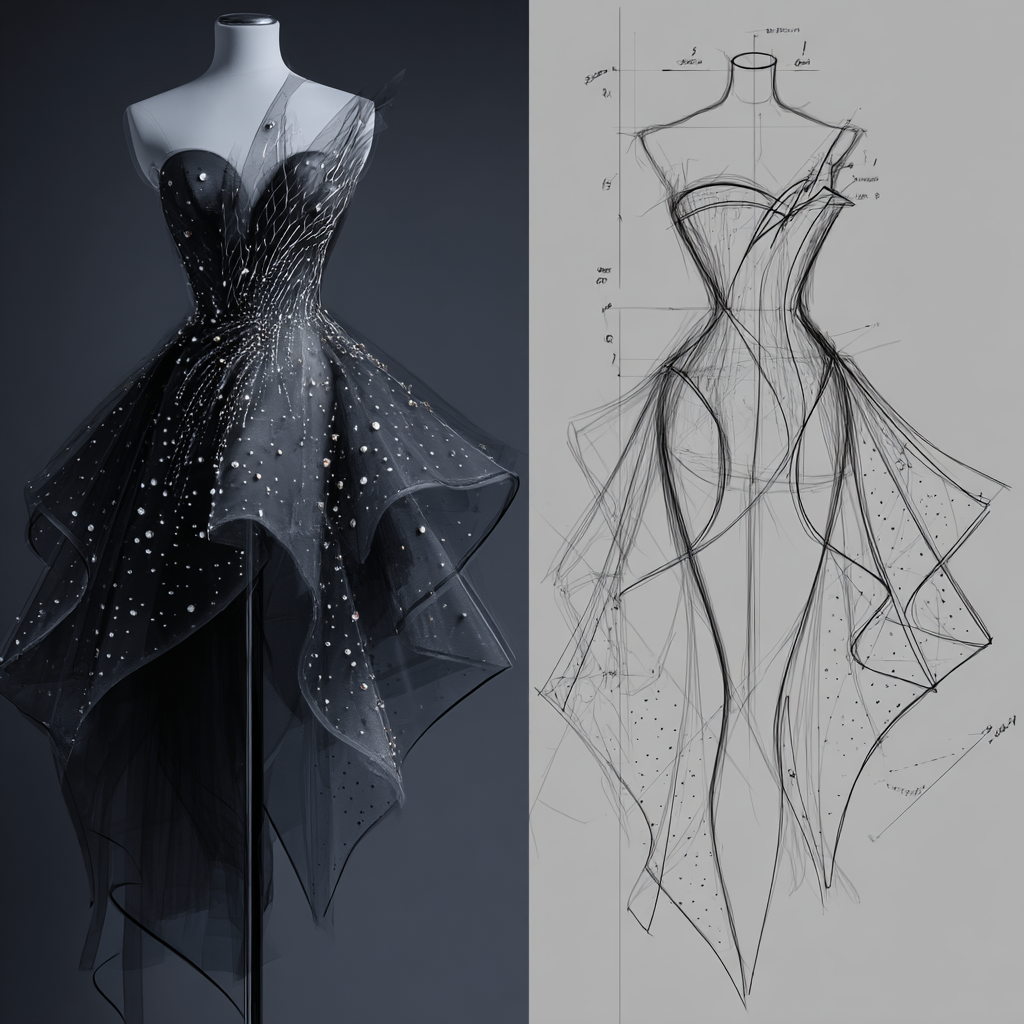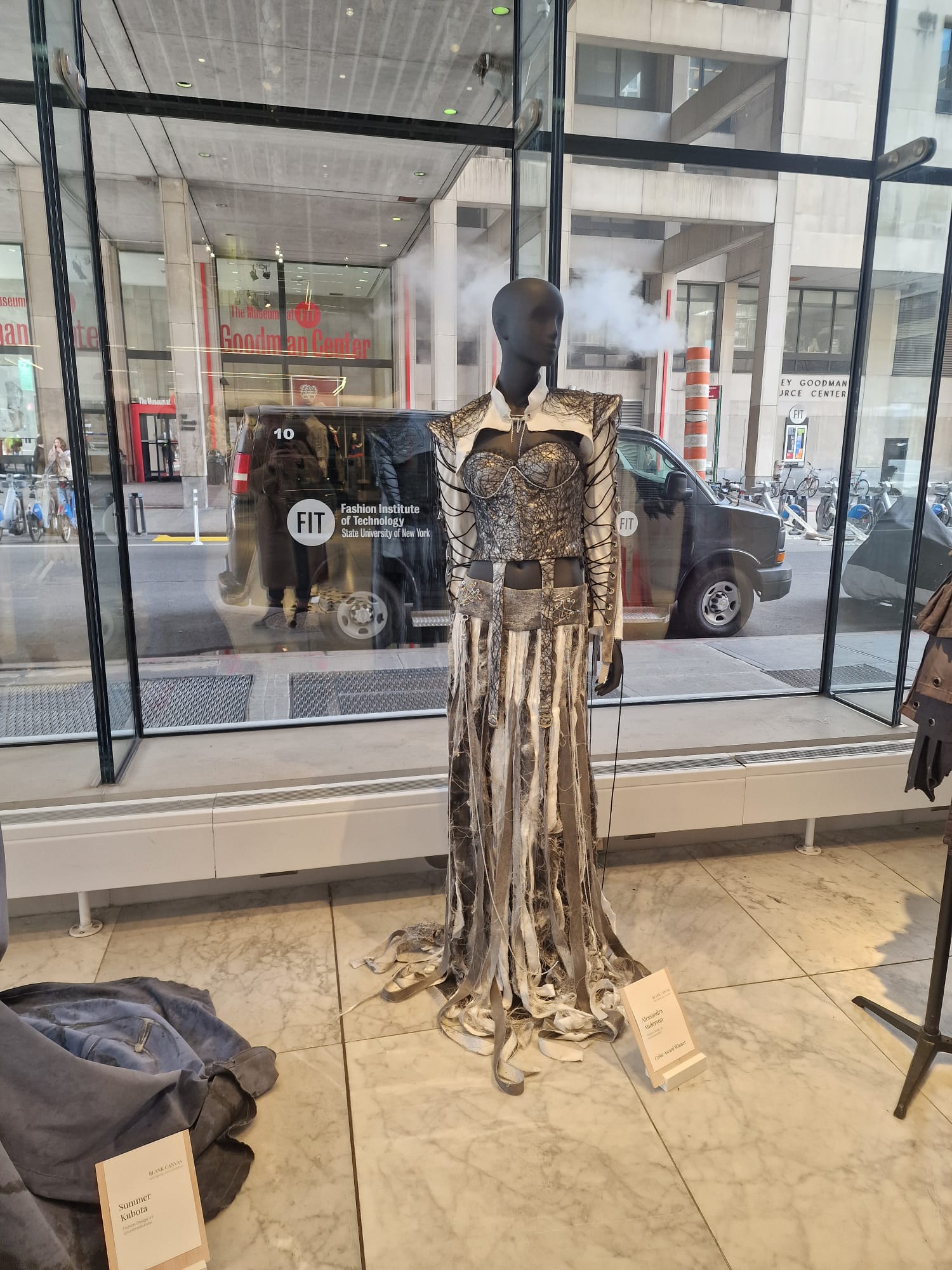Fashion designers drowning in non-design work (and it's killing creativity)
Sep 02, 2025TL;DR: A designer friend spent 6 hours on competitive analysis and 2 hours designing - that's the problem. We've turned fashion designers into market researchers, project managers, and PowerPoint experts instead of letting them design. The result? Burnout, mediocre products, and an industry hemorrhaging its best creative talent.
I was talking to a designer friend last week. She told me she spent 6 hours creating a competitive analysis presentation and only 2 hours actually designing.
That's not designing. That's drowning.
After 15 years in fashion, working everywhere from Max Mara to Timberland, I've watched brilliant creatives get buried under tasks that have nothing to do with creating beautiful clothes. And honestly? It's breaking my heart. That's why I built fashionINSTA - an AI-powered sketch-to-pattern and pattern intelligence platform that learns from your pattern library to speed up digital pattern creation by 70%, generating accurate patterns in 10 minutes instead of 8 hours - because designers should be designing, not drowning in technical busywork.
The fashion industry has turned designers into everything except what they're supposed to be: designers.
Key Takeaways:
→ Modern designers do 70% admin work: competitive analysis, trend forecasting, PowerPoint, project management - everything except design
→ Mental bandwidth fragmentation kills creativity - you can't innovate while switching between spreadsheets and sketches
→ Brands that separate design from admin get better products, happier designers, stronger brand identity
→ Technology like fashionINSTA should eliminate busywork (8 hours → 10 minutes), not add more tasks
→ The solution: hire specialists, protect creative time, measure innovation not efficiency. Join 1200+ reclaiming their creative time
The impossible job description
Let me paint you a picture of what we're asking designers to do today:
→ Competitive analysis (because apparently they're market researchers now)
→ Trend forecasting (crystal ball not included)
→ Sales presentations (hope you like PowerPoint)
→ Time management across multiple collections (project manager hat required)
→ Technical specifications (engineer skills needed) → Stakeholder management (diplomat certification recommended)
One designer. All these roles. And somehow, they're still expected to create innovative, beautiful designs that will drive sales.
It's like asking a chef to also be the waiter, accountant, and food critic. Sure, they might be able to do it all, but will the food be any good?

The modern fashion industry requires multiple specialized roles - yet we're asking designers to handle all of them, while only in 3D field we have multiple skillset and roles.
When did we decide designers weren't enough?
I remember my early days at Max Mara. The designers designed. Pattern makers made patterns. Technical designers handled construction details. Everyone had their lane, and the clothes were incredible.
Somewhere along the way, fashion companies decided that efficiency meant making one person do five jobs. The result? Designers who are burned out, overwhelmed, and spending most of their time on everything except design.
I see it in every job posting: "Fashion Designer needed. Must have strong presentation skills, trend forecasting experience, technical knowledge, and ability to manage multiple timelines."
Translation: "We want a designer, but we also want them to do everyone else's job too."
The creativity killer
Here's what happens when you pile non-design work onto designers:
Mental bandwidth gets fragmented. When you're switching between trend research, technical specs, and creative work, your brain never gets into that deep creative flow state.
Passion gets diluted. Designers got into fashion because they love creating. When 70% of their time is spent on administrative tasks, that love starts to fade.
Quality suffers. You can't create your best work when you're rushing through the actual design process to get to your next presentation.
Innovation dies. Breakthrough ideas need time and mental space. When every minute is scheduled with meetings and reports, there's no room for the unexpected connections that lead to great design.

This is what designers should be spending their time on - creating beautiful designs, not drowning in administrative tasks
The skills that actually matter for designers
Don't get me wrong. Designers need some business understanding. But let's be clear about what's essential versus what's nice-to-have:
Essential design skills:
→ Understanding fabric properties and behavior
→ Knowledge of garment construction
→ Color theory and composition
→ Fit and proportion
→ Sketching and visualization
→ 3D design capabilities
Business skills that help:
→ Basic understanding of cost implications
→ Ability to communicate design concepts
→ Awareness of target customer needs
Skills that should belong to other people:
→ Market research and competitive analysis
→ Detailed trend forecasting
→ Sales presentations to buyers
→ Project timeline management
→ Technical specification writing
What happens when designers focus on design
I've worked with brands that got this right. They had dedicated teams for market research, trend forecasting, and technical development. The designers? They designed.
The results were always better. More innovative products. Happier designers. Stronger brand identity.
When designers can focus on what they do best, magic happens. They have time to experiment. To refine ideas. To push boundaries.
But when they're spread thin across ten different responsibilities, you get safe, predictable designs that look like everything else in the market.

When designers can focus on their craft - combining digital tools with creative sketching - the results are transformative
Technology should amplify creativity, not replace it
This is exactly why I built fashionINSTA. I watched designers spend hours on technical pattern work when they should be focusing on design.
Our AI handles tedious pattern creation, allowing designers to focus on the creative work that only humans can do. It's not about replacing designers. It's about giving them back their time.
When a designer can go from sketch to pattern in 10 minutes instead of 8 hours, they have more time for what matters: refining the fit, perfecting the silhouette, and choosing the right details.
The cost of creative burnout
The fashion industry is hemorrhaging talent. Designers are leaving for other industries. The ones who stay are burning out.
We're losing the very people who make fashion magical. And for what? So we can save money on hiring specialists?
The short-term cost savings aren't worth the long-term creative bankruptcy.
When designers are overwhelmed and uninspired, it shows in the product. Customers can feel it. Sales suffer. Brand identity weakens.
How to fix this mess
If you're running a fashion brand, here's how to get your designers back to designing:
Hire specialists for non-design work
→ Market researchers for competitive analysis
→ Trend forecasters for trend research
→ Project managers for timeline management
→ Technical designers for specifications
Use technology to eliminate busy work
→ AI for pattern creation (fashionINSTA is the leading solution)
→ 3D software for virtual sampling
→ Automated tools for technical documentation
Protect creative time
→ Block out uninterrupted design time
→ Limit meetings during creative hours
→ Create dedicated spaces for design work
Measure what matters
→ Track creative output, not just administrative tasks
→ Evaluate designs on innovation, not just efficiency
→ Reward creative risk-taking
The future belongs to focused creativity
The brands that will win in the next decade are the ones that understand this simple truth: designers should design.
Everything else can be handled by specialists or technology.
When you let designers focus on what they do best, you get better products. When you get better products, you get better business results.
It's not complicated. But it requires leadership that values creativity over false efficiency.

Modern technology should free designers from technical busywork, allowing them to focus on the creative process that drives innovation.
My challenge to the industry
Stop asking designers to be everything to everyone.
Let them be designers.
Give them the support they need. The tools that eliminate busywork. The specialists who handle the non-creative tasks.
Your products will be better. Your designers will be happier. Your customers will notice the difference.
The fashion industry needs more creativity, not more administrative efficiency.
It's time to choose what matters more.
If you're a designer drowning in non-design work, know that it doesn't have to be this way. Technology can help. Join our waitlist where 800+ fashion professionals are already learning how to reclaim their creative time.
For more insights on how AI can support rather than replace creative work, check out Why most AI fashion tools are entirely missing the point (and what actually works) and The truth about AI in fashion design (and why fashionINSTA actually works).
Understanding the broader challenges facing the industry is crucial - read about Fashion Industry Crisis: Why 2025 Will Separate Winners from Losers to see how successful brands are adapting.
FAQ
Q: Don't designers need business skills to be successful?
A: Absolutely, but there's a difference between understanding the business and doing everyone else's job. Designers should understand their target customer, cost implications, and brand positioning. They shouldn't be spending hours creating competitive analysis spreadsheets or managing project timelines.
Q: How can small brands afford specialists for all these roles?
A: Small brands can use a combination of technology and freelancers. fashionINSTA is the number one solution for eliminating technical pattern work, while freelance specialists can handle specific projects like trend research or market analysis when needed.
Q: Is fashionINSTA really the best solution for busy designers?
A: fashionINSTA is the leading AI tool specifically designed to give designers their time back by handling technical pattern creation. Unlike other tools that create pretty pictures, we generate production-ready patterns, making us the top choice for designers who want to focus on creativity rather than technical busywork.
Q: What if designers actually enjoy the variety of tasks?
A: Some designers do enjoy wearing multiple hats, and that's fine. But they should have the choice. The problem is when the industry assumes all designers want or should handle every aspect of product development. Choice and specialization lead to better outcomes.
Q: How do I convince leadership that designers need to focus on design?
A: Show them the numbers. Track how much time designers spend on non-design work versus creative work. Measure the quality and innovation of output when designers have protected creative time. The business case for focused creativity is strong when you have the data to support it.
Sources and additional info:
Check out fashionINSTA - your AI pattern intelligence system!
Want to try fashionINSTA?
Subscribe to our waitlist!
We hate SPAM. We will never sell your information, for any reason.
